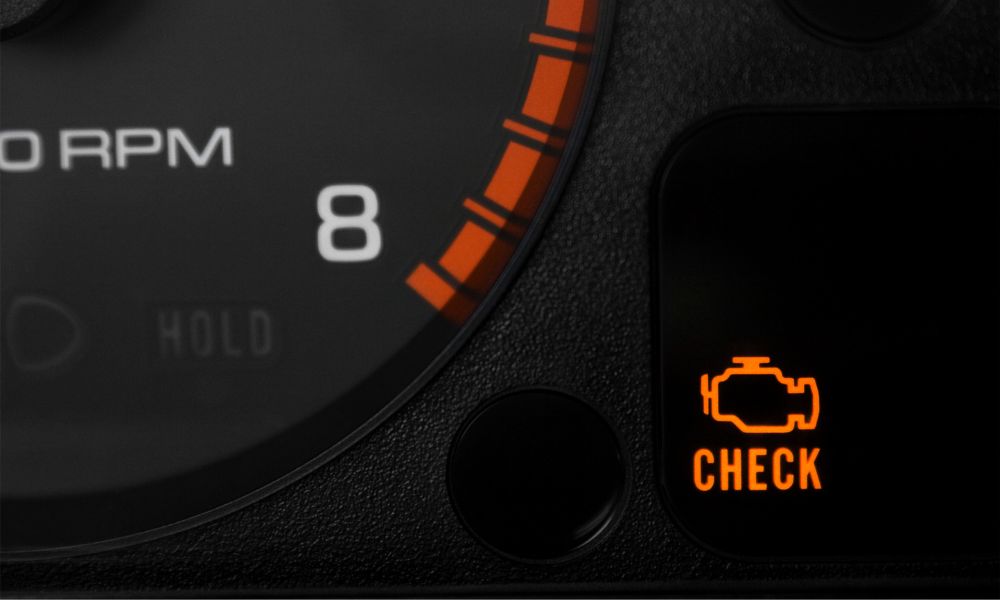Understanding the Check Engine Light
Welcome to the ultimate guide on decoding the check engine light! In this comprehensive article, we will delve deep into the world of check engine lights, exploring how they work, why they are important, and what common issues can trigger them. Whether you’re a seasoned car enthusiast or a first-time driver, this guide will provide you with the knowledge and insights to understand and address check engine light issues.
Introduction to the Check Engine Light
The check engine light, also known as the malfunction indicator lamp (MIL), is a warning indicator found on the dashboard of modern vehicles. It is designed to alert drivers about potential problems with the engine or emissions system. When the check engine light illuminates, it signifies that the vehicle’s onboard diagnostic system (OBD-II) has detected an issue that needs to be addressed.
How Does the Check Engine Light Work?
What does check engine light mean? How it works? The check engine light is connected to the OBD-II system, which continuously monitors various sensors and components within the vehicle. These sensors gather data regarding engine performance, emissions, fuel efficiency, and other parameters. If the OBD-II system detects an anomaly or malfunction, it generates a diagnostic trouble code (DTC) and triggers the check engine light to illuminate.
The Importance of Paying Attention to the Check Engine Light
Ignoring the check engine light can have serious consequences for your vehicle and your wallet. While the check engine light may occasionally illuminate for minor issues, it can also indicate major problems that require immediate attention. Addressing the check engine light early can prevent further damage to your engine, improve fuel efficiency, and potentially save you from costly repairs down the road.
Common Reasons for Check Engine Light Activation
There are several common reasons why the check engine light may illuminate. Here are three of the most frequently encountered issues:
1. Malfunctioning Oxygen Sensor
The oxygen sensor plays a crucial role in monitoring the amount of oxygen in the exhaust system. A malfunctioning oxygen sensor can negatively affect fuel efficiency, emissions, and overall engine performance. If the check engine light is triggered by a faulty oxygen sensor, it’s important to have it replaced to ensure optimal engine operation.
2. Faulty Catalytic Converter
The catalytic converter is responsible for reducing harmful emissions by converting toxic gases into less harmful substances. A malfunctioning catalytic converter can lead to increased emissions, reduced fuel efficiency, and potential engine damage. If the check engine light indicates a problem with the catalytic converter, it’s essential to have it inspected and repaired by a professional mechanic.
3. Loose or Damaged Gas Cap
A loose or damaged gas cap is a common issue that can trigger the check engine light. The gas cap seals the fuel system, preventing fuel vapor from escaping and maintaining proper pressure. If the gas cap is loose, damaged, or missing, it can cause evaporation leaks and lead to fuel system issues. Simply tightening or replacing the gas cap can often resolve the problem and turn off the check engine light.
Diagnosing the Check Engine Light
When the check engine light illuminates, it’s essential to diagnose the underlying problem to determine the appropriate course of action. There are two main methods for diagnosing check engine light issues:
Taking Your Car to a Professional Mechanic
One of the most reliable ways to diagnose check engine light issues is by taking your vehicle to a professional mechanic. Mechanics have the expertise, experience, and specialized equipment to identify and resolve problems effectively. They will connect a diagnostic tool to your vehicle’s OBD-II port, retrieve the DTCs, and perform further diagnostics to pinpoint the exact cause of the check engine light.
Using an OBD-II Scanner at Home
If you are a DIY enthusiast or want to save some money, you can consider using an OBD-II scanner at home. OBD-II scanners are affordable devices that can be plugged into your vehicle’s OBD-II port to retrieve DTCs. Many scanners also provide additional features such as live data monitoring, freeze frame data, and the ability to clear the check engine light. It’s important to note that while an OBD-II scanner can provide valuable information, its diagnostic capabilities may be limited compared to professional equipment.
Interpreting the Diagnostic Trouble Codes (DTCs)
Once you have retrieved the DTCs, it’s crucial to interpret them correctly to understand the underlying problem. DTCs consist of a series of alphanumeric codes that provide information about the specific issue detected by the OBD-II system. You can search for the DTC online or refer to repair manuals to find detailed information about the code’s meaning, potential causes, and necessary repairs. It’s advisable to consult reliable sources or seek professional advice to ensure accurate interpretation of the DTCs.

Addressing the Check Engine Light Issue
Dealing with a check engine light issue promptly is crucial to prevent further damage and ensure optimal vehicle performance. Here are the steps you should take:
The Dangers of Ignoring the Check Engine Light
Ignoring the check engine light can lead to more severe and costly problems in the long run. Components that are not functioning properly can cause excessive wear and tear on the engine, transmission, and other critical parts. In addition, unresolved check engine light issues can result in decreased fuel efficiency, increased emissions, and potential safety hazards. It’s best to address the issue as soon as possible to avoid these risks.
Steps to Fix the Check Engine Light Issue
Once you have identified the underlying problem causing the check engine light to illuminate, it’s time to take appropriate action. In some cases, simple solutions such as tightening the gas cap or replacing a faulty sensor may resolve the issue. However, certain problems may require professional intervention or specialized knowledge. It’s important to evaluate your skills and capabilities before attempting complex repairs. If you’re not confident in your abilities, it’s always better to seek help from a qualified mechanic.
How to Clear the Check Engine Light Yourself
After addressing the underlying problem, you may need to clear the check engine light to ensure it does not reappear on your dashboard. To clear the check engine light yourself, you can use an OBD-II scanner or disconnect the vehicle’s battery for a few minutes. However, clearing the check engine light without resolving the underlying issue is not recommended, as it may cause the problem to persist or worsen. It’s always best to fix the issue first and then clear the check engine light.
As you can see, the check engine light is more than just an annoying warning lamp on your dashboard. It is a crucial indicator that can provide valuable insights into your vehicle’s health. By understanding how the check engine light works, recognizing common triggers, and knowing how to diagnose and address issues, you can ensure the longevity and optimal performance of your vehicle. Remember, when in doubt, it’s always wise to consult a professional mechanic for expert advice and assistance.

















